The Helicopter-Flying Wildlife Biologists Saving Our Wildlife
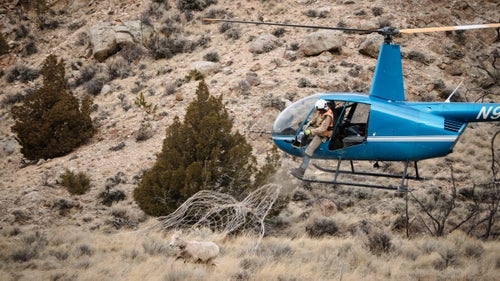
The is composed of researchers, writers, students, and conservationists who strive to advance the understanding of the state’s migratory deer and bighorn sheep. Increases in private housing developments, traffic, and energy extraction on our public lands have threatened many ungulate migration routes in Wyoming.
For a week in March, photographer shadowed the WMI folks as they captured and collared 35 Rocky Mountain bighorn sheep and 220 mule deer throughout Wyoming. From the Red Desert to eastern Greater Yellowstone, Kraushaar documented the steps involved in WMI’s efforts to better understand the migrations and health of these animals. Here, Kraushaar shares a behind-the-scenes look at the fast-paced life of wildlife biologists collecting invaluable data in the field.
Photo: Kevin Coates, who works for , nets a bighorn sheep. Once netted, the mugger (the person who subdues the animal) jumps from the chopper and carefully hobbles and blindfolds the sheep. For deer and sheep, sedation is usually unnecessary. Coates then carefully prepares the animal for transport to a nearby field research setup.
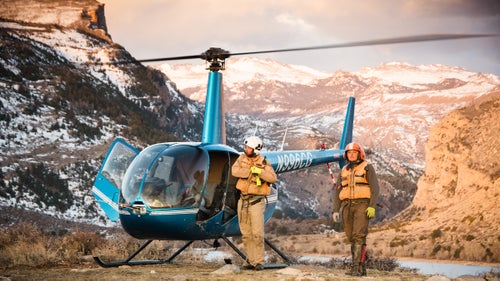
The southern Wind River Range provides a dramatic backdrop as Coates (left) and Colton Hodson (right) prepare for a long day in the chopper. Coates and Hodson have arguably the most dangerous and exciting job in wildlife biology.
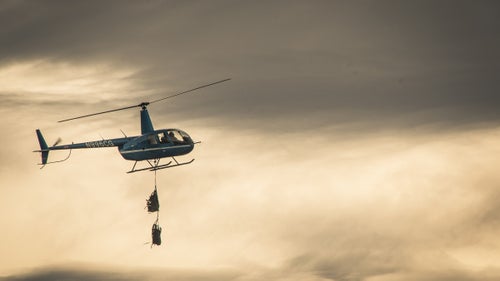
Pilot David Rivers ferries two female mule deer to a staging area where biologists will collect data and deploy GPS tracking collars. These lightweight helicopters can ferry up to three mule deer at a time. To save precious weight, the chopper carries just enough fuel to get through a single job.
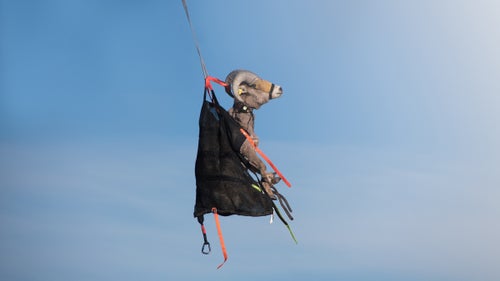
A Rocky Mountain bighorn sheep captured near Dubois, Wyoming, is transported to the staging area. The ram’s heavy horns make it extra important that the muggers properly secure its head. The Rocky Mountain bighorn sheep is the largest sheep species in North America and can weigh more than 300 pounds.
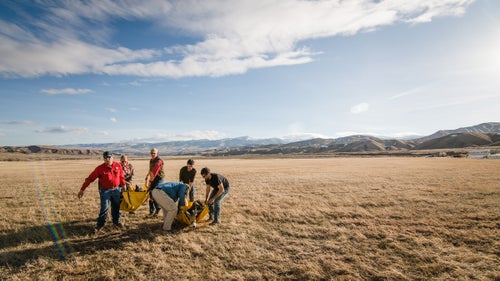
After the helicopter drops off the animals, biologists remove the transport harness and place the animals on litters. They then delicately carry the animals to padded mats, where biologists take measurements and collect samples to check overall health.
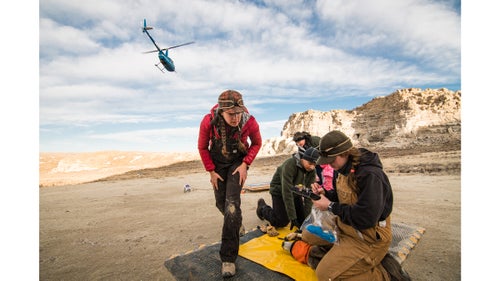
The capture crew heads off to net more deer as biologists Anna Ortega (left) and Katey Huggler (right) begin collecting data. It’s essential that the biologists work as quickly as possible to minimize stress on the animal.
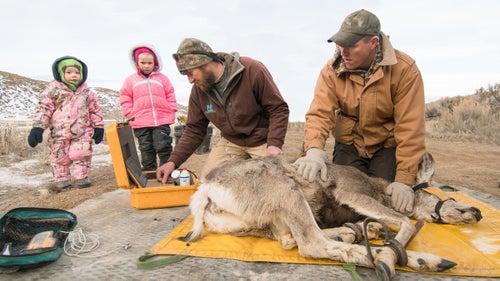
(left) of the administers an ultrasound as Patrick Lionberger (right) of the Bureau of Land Management tries to keep the doe calm. Monteith’s two daughters observe their dad at work.
The ultrasound allows researchers to determine if the doe is pregnant. By measuring the eye diameter of the fetus, researchers can assess its stage of development. Female mule deer typically carry twins but occasionally have triplets.
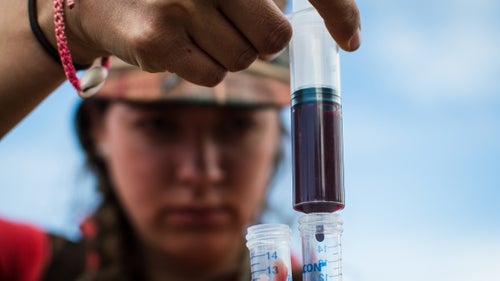
Ortega processes a blood sample collected from a mule deer doe near Lander, Wyoming.
Scientists analyze the blood for hormone concentrations, genetics, and disease. Ortega will continue this research for three more years and promises to post updates on .
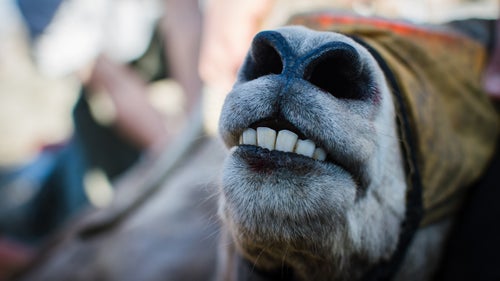
A large ram showing off its teeth. The least-invasive way of determining the age of these ungulates is to have an experienced biologist inspect its teeth for the amount of overall wear.
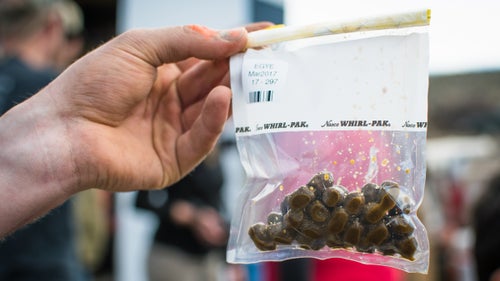
In addition to blood, biologists collect fecal samples directly from the animal. These samples provide valuable insight into animal diet and hormone concentrations, including cortisol, a hormone that gives researchers an indication of the animals’ stress levels.